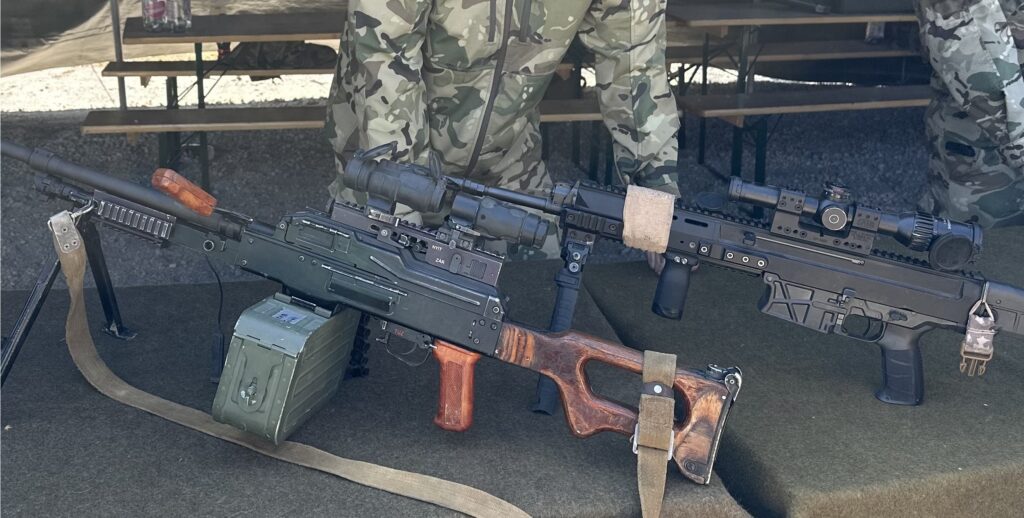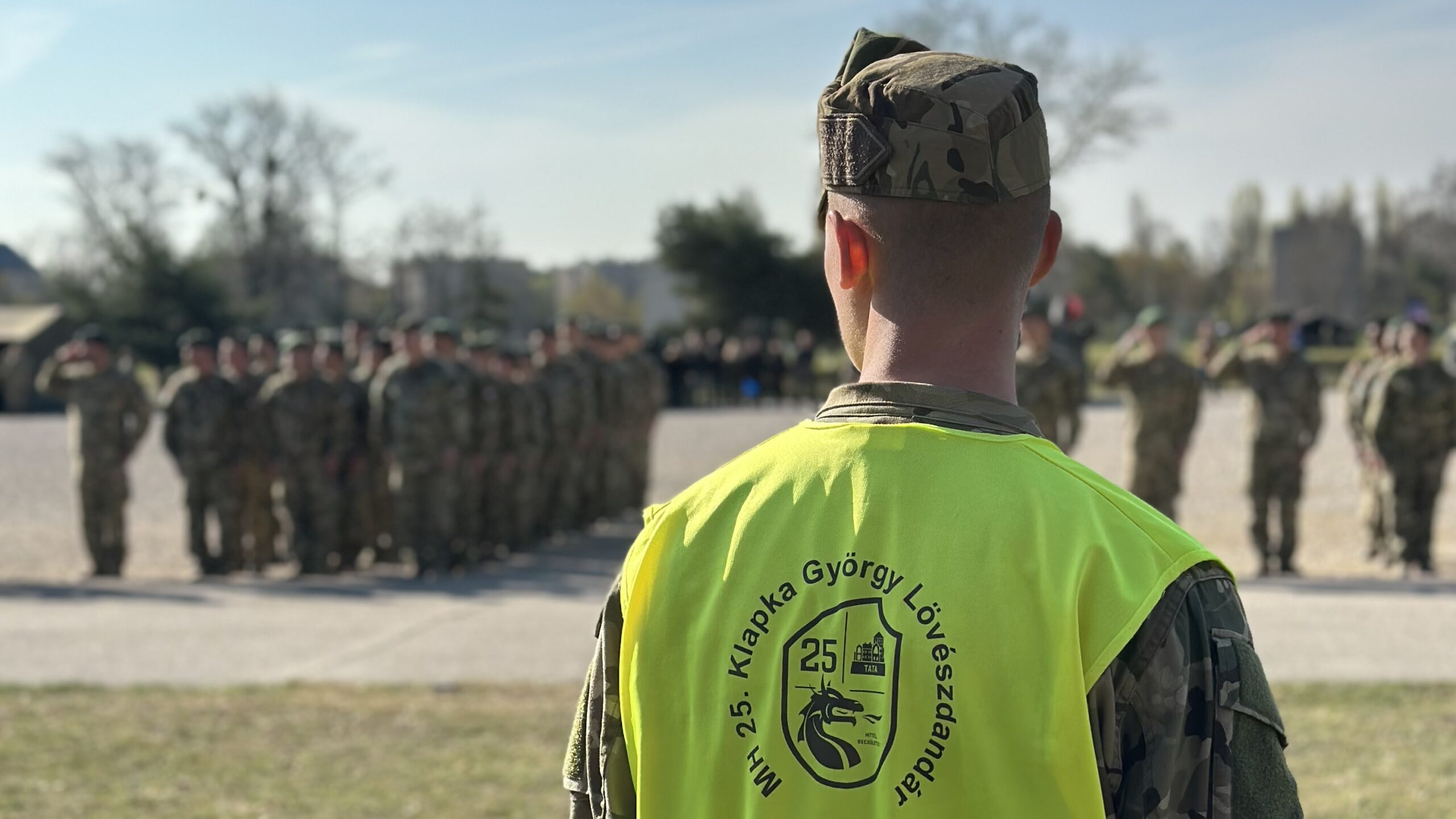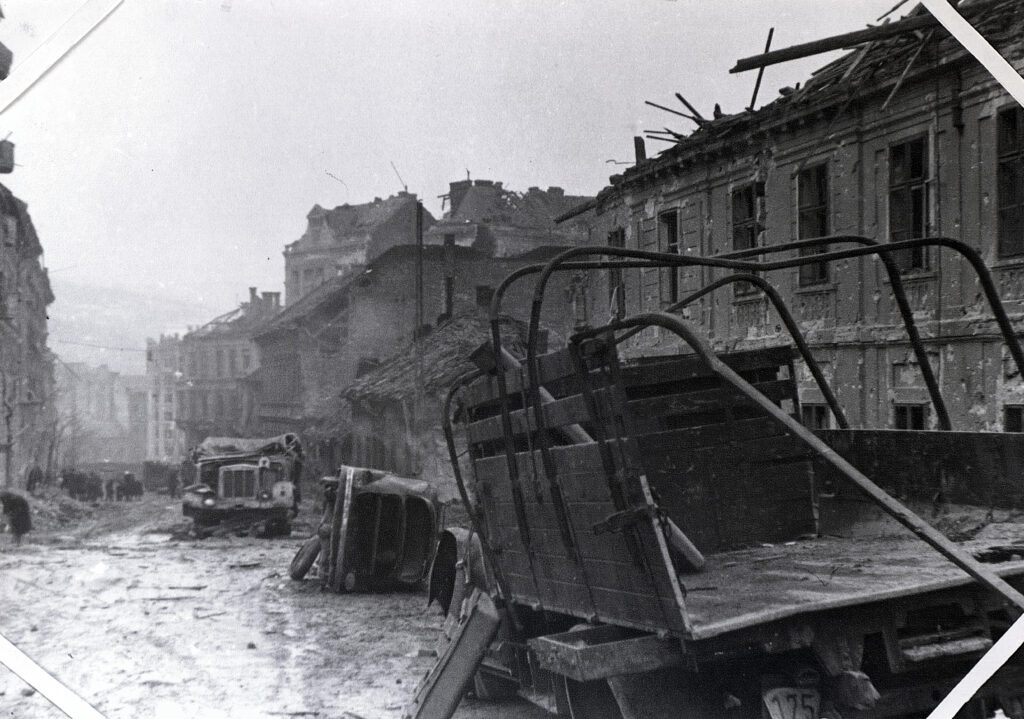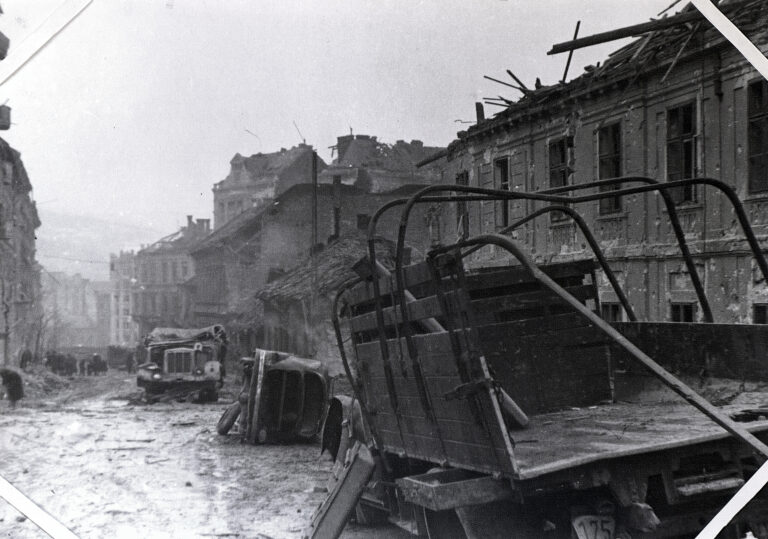The April 2025 commitment of the HDF György Klapka 1st Armoured Brigade showcased the organizational maturity, societal integration, and mission-oriented focus of the modern Hungarian Defence Forces. The Tata-based unit marked the end of a period in which operational readiness, international deployment, and domestic societal engagement reinforced one another.
During the month, the unit participated in several significant professional tasks. The tank personnel carried out a successful live fire on the Bakony training ground, which tested not only their technical preparedness but also the physical and psychological endurance of the soldiers. In parallel, the rifle company, within the framework of the MILEX25 international exercise, demonstrated that the Hungarian defence forces are capable of cooperation and executing tasks at a high level in an international environment.
On 11 April, on the occasion of the ‘Day of the Unit’, the brigade held its annual open day, an event that attracted several thousand visitors to the Tata barracks. This significant turnout reflected public confidence in the armed forces and underlined their close connection with society. Guests could explore military equipment displays, interact with personnel, and witness the ceremonial reception of soldiers returning from the NATO KFOR mission in Kosovo—a peacekeeping mission in which Hungary is a key contributor.
Hungary’s Key Role in Kosovo
The HDF KFOR Contingent’s 31st rotation’s successful service carries not only strategic, but also symbolic value. The mission fulfilled in the Balkans clearly shows that Hungary aligns its national interests with international security policy commitments, while the personal sacrifices of soldiers can serve as individual examples for society.
The Hungarian Defence Forces play an outstanding role in international peacekeeping, with one of their most important areas of engagement being participation in the Kosovo Force (KFOR) mission. Launched by NATO in 1999 after the end of the Kosovo War, the KFOR mission aims to stabilize the Balkans region and maintain the security of the country. Hungary has contributed continuously to the success of this mission and remains actively involved today. The objective of the Hungarian Defence Forces is not only peacekeeping but also the protection of national interests and the promotion of stability in the region.
In April, the 32nd rotation of the Hungarian KFOR Contingent commenced its mission, comprising approximately 280 Hungarian military personnel. The new contingent is set to serve in Kosovo from April to September, with responsibilities including security operations, crowd control, and support for local communities and international partners. The Hungarian Defence Forces deployed in the mission also utilize modern technical equipment, such as H145M helicopters and Skylark unmanned aerial vehicles, which enhance operational capabilities and efficiency.
Hungary's participation in the KFOR mission is of key importance, as the stability of the Balkans directly impacts national security. Active involvement not only fulfils international obligations but also strengthens the country’s international prestige. The dedicated work of Hungarian soldiers and the professionalism represented by the Defence Forces play a crucial role in maintaining peace and protecting Hungary’s national interests.
The command and coordination of the Hungarian KFOR Contingent are managed by the HDF 1st Military Support Regiment, one of the largest and most important units within the Hungarian Defence Forces. The leadership of the Hungarian contingent is entrusted to high-ranking officers, who are responsible for the successful execution of operations and ensuring effective international cooperation.
It was also evident during the event that defence is not merely a matter of sectoral policy, but a service imbued with deep cultural and moral meaning—a vocation that symbolizes the values of order, discipline, and committed service.
The brigade line-up provided a dignified setting in which to recognize the achievements made. The discipline and professional performance of the honoured soldiers affirm the fundamental belief that order, sacrifice, and loyalty to the community remain essential conditions for the nation’s survival to this day.
Besides Kosovo, the Tata brigade also served in Bosnia and Herzegovina and Afghanistan
The Backbone of the Modern Hungarian Armed Forces
The Hungarian Defence Forces’ György Klapka 1st Armoured Brigade is not only the most powerful and destructive unit of Hungary’s land forces, but also a symbol of national commitment, respect for tradition, military modernization, and ongoing technological advancement.
The brigade is continuously modernizing its equipment to meet the demands of 21st-century warfare. As part of the Zrínyi 2026 force development programme, the Tata unit operates cutting-edge military assets such as the Leopard 2A4 and the Leopard 2A7HU tanks—the latter uniquely customized for the Hungarian Army—the PzH 2000 self-propelled howitzers, and the Gidrán armoured vehicles.
In 2024, a further 13 Gidráns were delivered to the brigade, enhancing the combat capabilities of the Vitéz József Barankay 1st Self-Propelled Artillery Battalion—further proof that Hungary is not merely preserving but actively strengthening its military sovereignty.
The Gidrán engine: 6-cylinder turbocharged Cummins diesel
Power Output: 375 hp
Operational Range: 700 km
Maximum Speed: 120 km/h
The deployment of the Leopard 2A7HU tanks marks more than just a military technological milestone; it also sends a clear message to the world: Hungary is prepared to defend itself, its values, and its sovereignty. This investment is not about waging war, but about preserving peace—through modern technology, dedicated personnel, and unwavering patriotism.
As the most advanced variants of the Leopard tank family, the Leopard 2A7HU models are specifically adapted to Hungarian requirements. These tanks demonstrate superiority in both firepower and defensive capability. Their sloped, modular turret armour, combined with the potential for integration of active protection systems, ensures that they are equipped to face the most modern threats—whether in urban environments or open terrain.
The tanks’ dimensions also command respect:
- Length: 7.7 metres (with cannon: 10.97 m)
- Width: 3.76 metres
- Height: 3.03 metres
They combine strength with speed and manoeuvrability, making them exceptionally well-suited to Hungary’s topographical conditions.
The regular training programme for the Leopards includes simulator and training ground elements, in addition to the manufacturer training in Germany. One of Europe’s most advanced simulation parks has been established in-house. As a result, soldiers not only operate the equipment, but also understand and master it—this is the key to true combat capability. The Ministry of Defence aims to have a total of 44 Leopard 2A7HU tanks in service by 2028, thereby enhancing the military’s capabilities not only on a technical level but also from a strategic perspective.
In the spring of 2025, the brigade conducted live-fire exercises with Leopard 2A7HU tanks at the Zero Point Firing and Training Ground in Veszprém County. The exercise, named ‘Bison Charge 2025/2’, took its name from the bison depicted on the insignia of the Vitéz Ervin Tarczay 11th Tank Battalion, and holds key significance for refining operational readiness plans related to the new platform and for guiding further development.
Where East Meets West
One defining trend in modern military technology is the parallel and integrated use of systems of different origins—Hungarian, Czech, Swedish, and Russian. The following weapon adaptations illustrate the practical implementation of this approach and how national developments and international tools effectively complement each other.
A prominent example is the Hungarian-developed M1 Gepárd, an anti-materiel sniper rifle based on domestic innovation. The Gepárd is one of the key symbols of the independent capabilities of the Hungarian defence industry. The weapon is equipped with Schmidt & Bender optics and uses .50 BMG (12.7×99 mm NATO) ammunition, enabling it to destroy hardened targets—such as vehicles or fortified positions—at distances of several kilometres.
The CZ Bren 2 BR, a Czech-developed Designated Marksman Rifle (DMR), as seen in the picture, is also equipped with Schmidt & Bender optics and a DBAL A2 laser designator. It delivers high accuracy at ranges of 600–700 metres and remains effective up to 800 metres in the hands of a trained marksman. Its primary function is to extend engagement capabilities beyond those of conventional carbines.

As part of Hungary’s Defence and Armed Forces Development Programme, the Hungarian Defence Forces have phased out their Soviet-era RPG-7 systems in favour of the Swedish-made Carl Gustaf M4 recoilless rifle. This step reflects Hungary’s commitment to military modernization in alignment with NATO standards.
Developed by Saab Bofors Dynamics, the Carl Gustaf M4 offers extended range, reduced weight, and compatibility with a wide range of ammunition types. It significantly enhances the firepower and operational flexibility of Hungarian infantry units.
The final delivery of HEAT 751 grenades in December 2024 marked the system’s full deployment. This acquisition also signifies closer defence cooperation between Hungary and Sweden. As a product of Sweden’s renowned defence industry, the Carl Gustaf M4 continues to stand as a symbol of reliable design and innovation—qualities closely associated with the reign of His Majesty King Carl XVI Gustaf.
Finally, the PKM machine gun represents the classical legacy of Russian military technology. The version showcased is fitted with an Aimpoint red dot sight and a 4× magnifier—both Western optical systems. This hybrid configuration allows for rapid target acquisition and effective engagement of medium-range targets, making it well suited to a variety of battlefield environments.
Together, these three systems exemplify the complementary integration of Hungarian, Western, and Russian technological elements, delivering significant combat capability enhancement in modern theatres of war.
Vocation and Patriotism
What would technology be without human commitment? A soldier’s right hand is a helping hand, the left an iron fist. The brigade’s soldiers are not only masters of modern equipment, but also living examples of patriotism.
Despite the cold steel of armoured vehicles and the undeniable technological progress of an increasingly automated world, one truth remains: human presence and human strength are irreplaceable. The security of the Hungarian people requires more than machines—it requires heart. As Mihály Vörösmarty, Hungarian poet and author of the ‘second national anthem of Hungary,’ The Appeal (Szózat), wrote: ‘For Hungarian strength lies not only in outward things, but in the depths of will and faith’.
The soldiers come from diverse backgrounds and perform various tasks, yet one principle unites them: no excuses, no complaints. They carry out their duties with quiet resolve and humility. Because they understand: moods fluctuate, but good deeds permanently reinforce character.
Weeks-long exercises, round-the-clock readiness, pushing physical and mental boundaries—all are integral to their training. The work of a tank crew is not merely a job, but a vocation. In the words of a young soldier: ‘This was never about money; this is my calling, guided by devotion to my homeland.’
Related articles:







